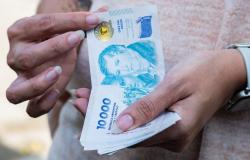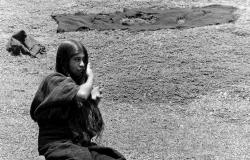
The prelude to Vatican conclave To choose a new Pope faces another scandal. He Peruvian cardinal Juan Luis Cipriani, who was sanctioned by Francisco after being involved in an alleged case of sexual abusewas present in the general congregations that take place these days.
Cipriani, 81archbishop emeritus of Lima and the first purple in the history of Opus Deihad been sanctioned by the Vatican in 2019. The disciplinary restrictions imposed on him were the exile from your country, the prohibition of carrying cardinal symbols and making public statements.
For his age he cannot enter the conclave but, despite being prohibited, He appeared in the general congregations dressed in the clothes that had been forbidden. Moreover, in a clear attitude of challenge to the orders of the Vatican authorities and the deceased Pope himself, he went to the Tomb of Francisco the day when all the Cardinals congregated in the Basilica of Santa María la Mayor.
The archbishop emeritus of Peru It is one of the icons of the Catholic ultracservatism. In his country he is not only known by his intolerance and attitudes of confrontation but also for his inclination towards the pomp of power, His questions to human rights, his support for politicians involved in cases of corruption and fujimorism declared.
The most serious controversy is that Cipriani could not have accessed the hermetic Vatican activities of these days if it were not because someone or an institution invited him to enter.
When asked about the subject, the Vatican spokesman, Matteo Bruni, said that “had no indications” on the subject and promised to be informed about it.
El caso de boss
The presence of the cardinal accused of sexual crimes is not the only scandal that shakes these days to the Cardinal College.
The Italian cardinal Angelo Becciu, whom Francisco had dismissed for fiscal fraud, It was presented as if nothing in the first Assembly of Cardinals despite being stripped of all privileges as purple, including participating in the election of the new Pontiff.
Becciu, 76, was formally sentenced to 5 years and 6 months in jail for financial crimes. He was the first religious with that rank to be tried by a Criminal Court of the Vatican. But before, in 2020, Francisco had removed his “rights associated with cardinals.”
It was found that he had bought a building in the London heart, in Sloane Avenue, an old headquarters of the Harrods galleries in the exclusive Chelsea neighborhood. But, in addition, during the process other financial crimes arose, such as donations of 125 thousand euros that the cardinal entered the account of an association linked to the Cáritas Sarda de Ozieri, its native place, and that at that time presided over one of his brothers.
The sanction to Cipriani
With the Peruvian Cipriani, the penalties were more serious because, in addition, they were the crimes that Pope Francis decided to face with “zero tolerance” towards cases of abuse.
After being sanctioned by Francisco, the Vatican had made public the sanctions imposed on Cipriani “as a result of the accusations against him”. It was even reported that the cardinal accepted the measures.
In a letter of response to that statement from the CEP, Cipriani expressed his “surprise and pain” for penalties and denied having committed the crimes that were awarded. “They are given by certain unseeding facts,” he said.
The Peruvian Episcopal Conference (CEP) also confirmed the sanctions He added that “the Holy Father has treated Cardinal Juan Luis Cipriani with exquisite pastoral charity and has proceeded by joining justice and mercy.”
Another peculiarity that comes to the case: Cipriani was appointed Cardinal along with Jorge Bergoglio. It happened in the eighth town hall convened by John Paul II, carried out in February 2001, in which ten Latin American prelates were elevated to the rank of glitter.
At that time, The Peruvian was from the archbishop of Lima and personal friend of former president Alberto Fujimoriwho during his government had entrusted negotiations with the guerrilla group that had taken the Japanese Embassy of Lima in 1997 and ended with a massacre in which there were executions by the army.





